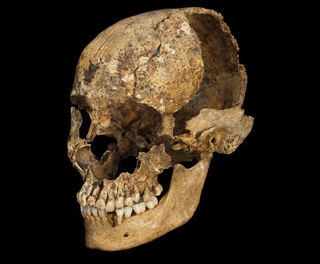
Archaeologists have unearthed evidence that the Jamestown settlers practiced cannibalism.
Researchers excavating at Jamestown fort discovered the mutilated skull and severed leg bone of a 14-year-old girl they have dubbed Jane. The bones were scattered amongst butchered dog and animal bones. Forensic analysis suggests the girl likely died of disease or starvation before she was eaten.
Written accounts from the time period reported instances of cannibalism during the "starving time," a brutal winter between 1609 and 1610, but most historians thought these were tall tales designed to get more money from Britain flowing to the colonies, Bill Kelso, chief archaeologist of the Jamestown Rediscovery Project, told U.S. News and World Report.
According to George Percy, one of the colony's survivors, the people of Jamestown "fed upon horses and other beasts as long as they lasted, we were glad to make shift with vermin, as dogs, cats, rats and mice." Moreover, the colonists also ate boots, shoes and leather, historical records indicate.
Originally published on Live Science.
Sign up for the Live Science daily newsletter now
Get the world’s most fascinating discoveries delivered straight to your inbox.

Tia is the managing editor and was previously a senior writer for Live Science. Her work has appeared in Scientific American, Wired.com and other outlets. She holds a master's degree in bioengineering from the University of Washington, a graduate certificate in science writing from UC Santa Cruz and a bachelor's degree in mechanical engineering from the University of Texas at Austin. Tia was part of a team at the Milwaukee Journal Sentinel that published the Empty Cradles series on preterm births, which won multiple awards, including the 2012 Casey Medal for Meritorious Journalism.
Most Popular



